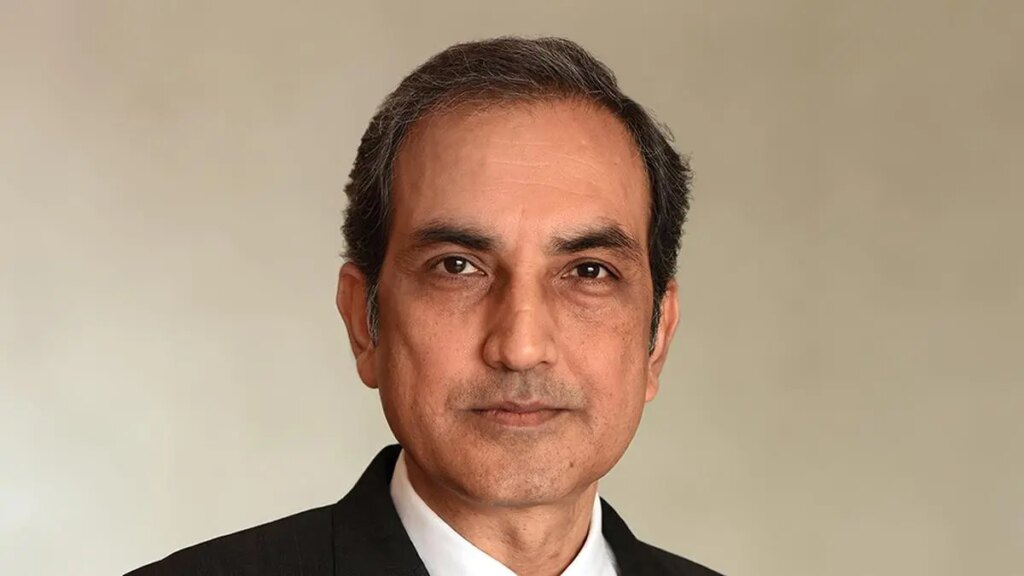
Costs and tepid consumer demand weigh on HUL Q4
HUL Q4 Results 2025: Rising Costs and Tepid Consumer Demand Impact Performance
CEO and MD Rohit Jawa addressing the HUL Q4 Results 2025 press conference | Photo Credit: Ebenezer Stephen Duraiappah B
Table of Contents
- HUL Q4 Results 2025: Key Highlights
- Financial Performance: Profit Decline and Revenue Growth
- Impact of High Input Costs on Margins
- Market Outlook and Future Growth Strategy
- Dividend Announcement and Quarterly Results
- Segment Performance Analysis
- Rural vs Urban Growth Dynamics
- Premium Product Segment Trends
- Quick Commerce and Distribution Channels
The HUL Q4 Results 2025 reflect persistent challenges faced by India’s leading FMCG company as high input costs and subdued urban demand continue to impact performance. The latest quarterly results from Hindustan Unilever reveal important insights into the current state of consumer markets in India, with significant implications for the broader FMCG sector. Despite these challenges, the company has outlined strategic investments aimed at capitalizing on anticipated recovery in consumer demand.
In this comprehensive analysis of HUL Q4 Results 2025, we explore how Hindustan Unilever is navigating inflation pressures, evolving consumer preferences, and changing market dynamics while positioning itself for future growth in India’s competitive FMCG landscape.
Financial Performance: HUL Q4 Results 2025 Show Profit Decline Despite Revenue Growth
The HUL Q4 Results 2025 paint a mixed picture, with consolidated net profit falling 3.67 percent to ₹2,464 crore compared to the same period last year. This decline comes despite a 3 percent increase in revenue from operations, which reached ₹15,670 crore during the quarter. The company’s underlying volume growth stood at a modest 2 percent, reflecting the challenging consumption environment in India.
A notable aspect of the HUL Q4 Results 2025 was the 30 basis points contraction in operating margin, which decreased to 23.1 percent. In response to these pressures, Hindustan Unilever has revised its EBITDA margin guidance for the near to mid-term, adjusting it downward to 22-23 percent from the earlier estimate of 23-24 percent. This recalibration reflects the company’s strategic decision to increase investments in high-growth demand spaces, despite the current margin headwinds.
Impact of High Input Costs on HUL Q4 Results 2025
According to the latest HUL Q4 Results 2025 report, elevated input costs across key categories significantly impacted the company’s performance. Particularly affected were tea, coffee, and skin cleansing segments, which experienced substantial cost pressures. While palm oil and skimmed milk powder prices showed deflationary trends, tea witnessed a dramatic 20 percent year-on-year inflation, and coffee prices remained persistently high.
Strategic Pricing Approach
Rather than passing the full burden of increased raw material costs to consumers, Hindustan Unilever implemented a more measured approach with smaller, staggered price increases. While this consumer-friendly strategy helped maintain volume momentum, it resulted in a price-cost mismatch that ultimately affected gross margins in the HUL Q4 Results 2025.
Market Outlook and Future Growth Strategy Following HUL Q4 Results 2025
During the media interaction following the announcement of HUL Q4 Results 2025, CEO and MD Rohit Jawa expressed optimism about future consumption trends. He cited favorable macro indicators for the economy, including the forecast of above-normal monsoon, as positive signals for a return to robust consumption demand.
In a subsequent analyst call, Jawa highlighted that the new Unilever CEO Fernando Fernandez, who assumed his role on March 1, views India as a key market in the Anglo-Dutch firm’s global strategy. Fernandez specifically identifies India and the US as anchor markets for Unilever’s future growth ambitions, underscoring the importance of the Indian operations in the company’s global portfolio.
Unilever’s Strategic Focus on India
Fernando Fernandez’s bullish stance on India signals potential increased investments and strategic focus from the parent company, which could translate into enhanced growth opportunities for HUL in the coming years. This global backing may prove crucial as the company navigates the current challenging market environment reflected in the HUL Q4 Results 2025.
Dividend Announcement in HUL Q4 Results 2025
As part of the HUL Q4 Results 2025 announcement, the board of directors recommended a final dividend of ₹24 per share. This dividend decision comes despite the profit decline, demonstrating the company’s commitment to delivering shareholder value even during challenging business conditions.
Looking forward, Hindustan Unilever has provided guidance that growth will gradually improve, driven by portfolio transformation actions and anticipated improvements in underlying macroeconomic conditions. Specifically, the company expects the first half of FY26 to perform better than the second half of FY25, indicating a sequential improvement in business performance. If commodity prices remain stable at current levels, HUL forecasts price growth to be in the low single-digit range.
Segment Performance Analysis: HUL Q4 Results 2025
The HUL Q4 Results 2025 revealed varied performance across different business segments. Home care, which remains the largest revenue contributor for Hindustan Unilever, demonstrated robust high single-digit volume growth. However, other key segments including food, beauty & wellbeing, and personal care experienced more sluggish sales performance during the quarter.
A notable bright spot in the HUL Q4 Results 2025 was the performance of recently acquired D2C brand Minimalist, which recorded an impressive turnover exceeding ₹500 crore in FY25. This success highlights HUL’s effective strategy in expanding its presence in the direct-to-consumer space and capitalizing on emerging consumer trends.
Rural vs Urban Growth Dynamics in HUL Q4 Results 2025
The HUL Q4 Results 2025 announcement was accompanied by a strategic outlook that emphasizes increased investments in anticipation of improved consumer spending. This investment strategy is predicated on several positive factors expected to boost both urban and rural spending, including tax rebates, lower interest rates, and receding food inflation.
Rohit Jawa specifically highlighted the resilience and robustness of rural markets in recent quarters. He identified several positive indicators for rural consumption, including projected favorable monsoons, strong agricultural output, and well-filled reservoirs. These factors are particularly significant for Hindustan Unilever given its substantial rural-facing product portfolio.
Strategic Investment Timing
“We believe that this is the right time to accelerate investment as we chart the future course of growth of the company in the backdrop of portfolio transformation actions and improving macro environment,” stated HUL in its media briefing following the HUL Q4 Results 2025 announcement.
While acknowledging that urban demand remained soft during the quarter, Jawa expressed confidence that positive macro triggers such as declining food inflation, lower interest rates, and consumer tax relief would eventually stimulate consumption growth. “We believe that this is a good time for us to lean in and invest in growth,” he affirmed.
Quick Commerce and Distribution Channels Assessment in HUL Q4 Results 2025
The HUL Q4 Results 2025 presentation acknowledged the rapid growth of quick commerce and e-commerce channels. However, Hindustan Unilever emphasized that general trade continues to be the backbone of its business, accounting for approximately 70 percent of total sales.
“QuickCommerce is still a small share of our total business. General Trade is the large majority, that’s the heart of our business. We are very kirana-centric and distributed, inclusive in that model. More than two-thirds of our business goes to General Trade. We do well when the general trade does well,” Rohit Jawa explained during the HUL Q4 Results 2025 announcement.
This balanced approach to distribution channels highlights HUL’s strategy of maintaining its strong traditional retail presence while simultaneously adapting to emerging digital commerce trends.
Conclusion: HUL Q4 Results 2025 Signal Strategic Adaptation
The HUL Q4 Results 2025 reflect both immediate challenges and strategic positioning for future growth. While profit decline and margin pressure indicate current headwinds, Hindustan Unilever’s planned investments, focus on portfolio transformation, and optimism about improving macroeconomic conditions signal a forward-looking approach.
With strong backing from Unilever’s global leadership, resilient rural markets, and strategic investments in high-growth areas, HUL appears well-positioned to navigate the current challenges and capitalize on the anticipated consumption recovery. The coming quarters will be crucial in determining whether the company’s strategic bets pay off in terms of improved financial performance and market share gains.
As India’s FMCG bellwether, the trajectory of Hindustan Unilever following these HUL Q4 Results 2025 will provide valuable insights into the broader consumer goods sector and overall consumption trends in the Indian economy.






